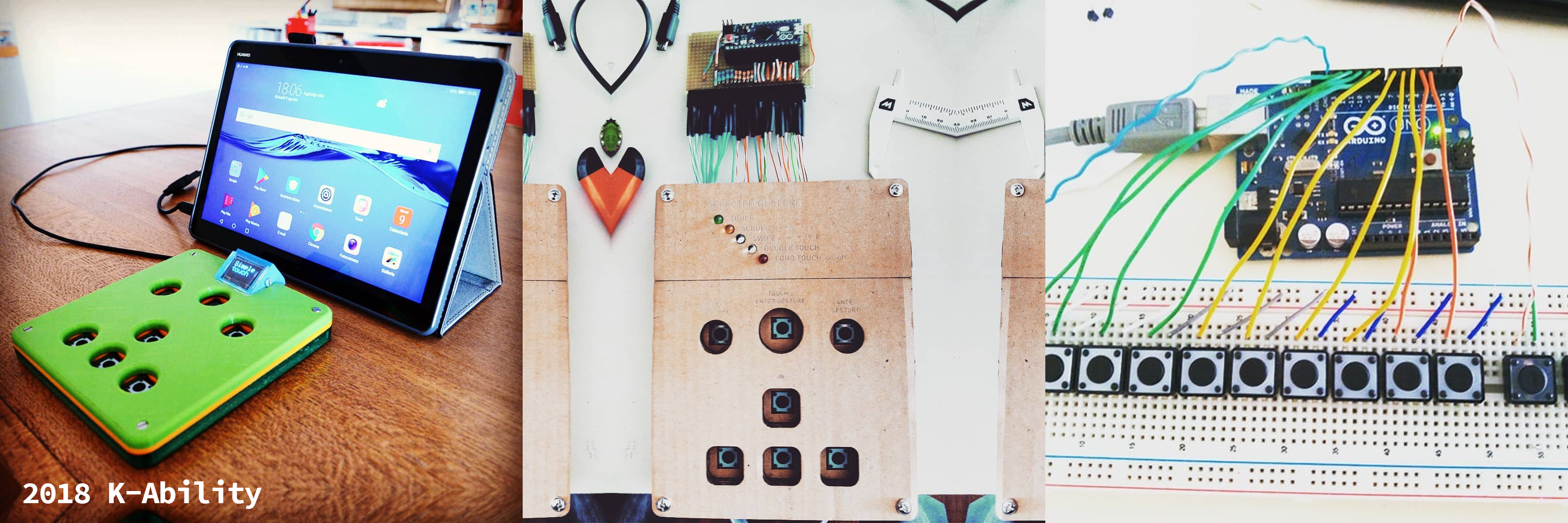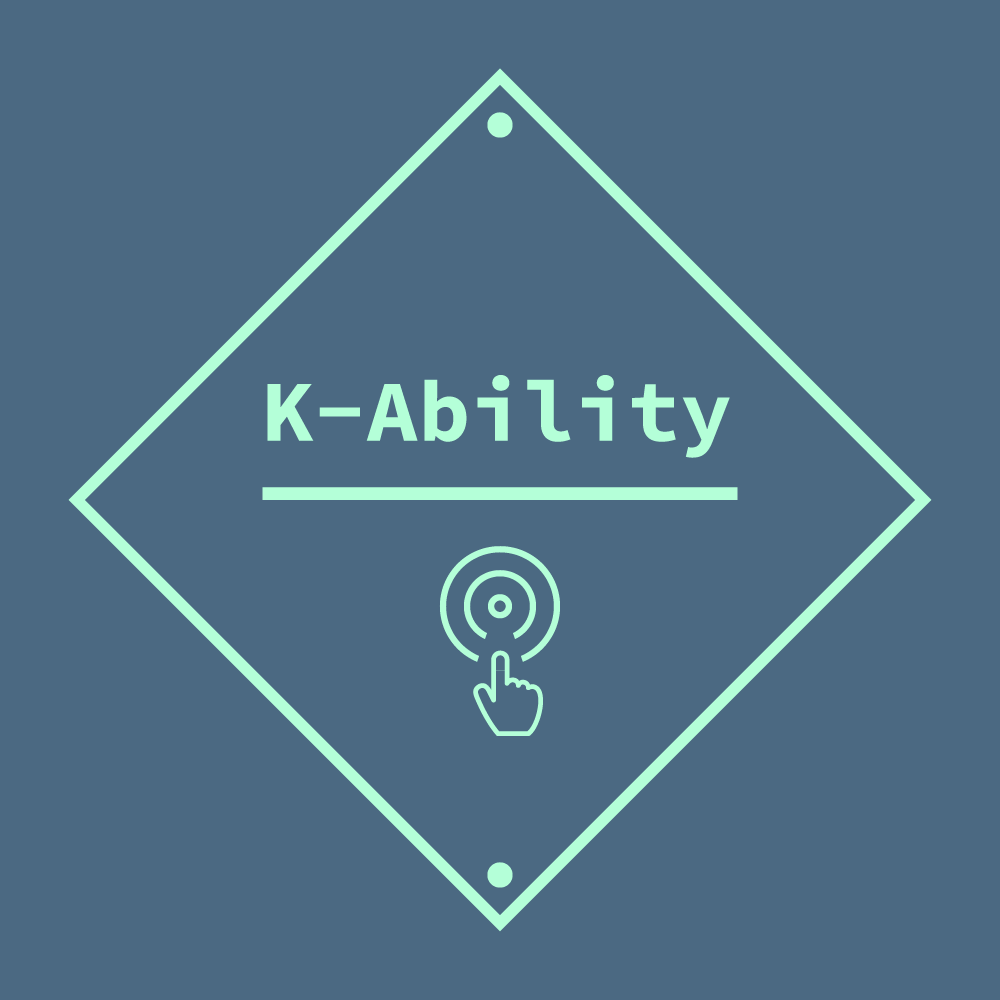This is not the first time I have posted this project on Hackaday or other platforms.
Each previous project consisted of a device that would allow people with physical problems ( like tremors and spasms) to use a computing device.
Working on these projects, I became passionate about finding a simple way to make complex actions, like touch screen gestures, accessible. My research did not focus on the design of simple mouse or keyboard, but on a device that would allow for the simplification of the movements most commonly used in mobile devices.
Each device previously made, consisted of 7 buttons (4 arrows and 3 actions). The combination of these 7 inputs made it possible to break down each complex gesture or movement into single simple actions to be performed procedurally, avoiding the physical and cognitive stress of simultaneous multiple movements in a single action.
2018 K-Ability
https://hackaday.io/project/160279-k-ability - video

The project consisted of 3 prototypes made with Arduino. The first was made simply with a breadboard with buttons. The second was made of cardboard and had a more elaborate shape. The last one was more solid and neat, made in 3d printing and equipped with a small oled screen. The device was compatible with many devices and connected and powered via usb port.
2019 K-Ability V2
https://www.instructables.com/K-Ability-V2-Open-Source-Accessible-Keyboard-for-T/ - video

A year later I created a paper prototype by adding bluetooth connection and replacing the tactile buttons with capacitive buttons.
2020 K-Ability Dev Kit
https://hackaday.io/project/172392-k-ability-dev-kit

From 2020, thanks to the release of some specific libraries, I started developing on esp32 so as to save components and circuit space.
The main difference with previous prototypes is that I focused on an idea of modularity in order to give the product various shapes and various sizes.
2023 K-Ability Toolkit

Now I would like to continue this experience in a different way, creating a library of tools that can help other people self-produce their own devices and share them with the community.
The work in the next few months will have very close updates to get to these 5 main goals:
- Document, clean up and make usable the code (arduino/esp32) used in previous prototypes.
- Document the hardware choices made so far and create open source pcbs to make it easier to build and test future devices.
- Add other functions to the current firmware, such as various types of accessible keyboards, configurations to change the responsiveness of the device, and all those useful functions to configure and make the program solid.
- Publish sketches, technical drawings and design ideas, which will improve the industrial design of possible devices
- Create one or more reproducible devices with open souce technologies.
 dariocose
dariocose
Discussions
Become a Hackaday.io Member
Create an account to leave a comment. Already have an account? Log In.